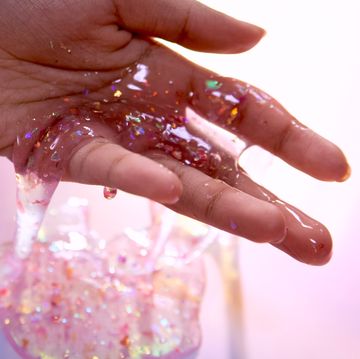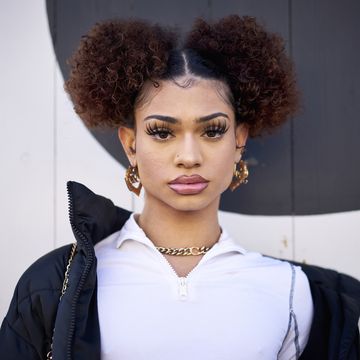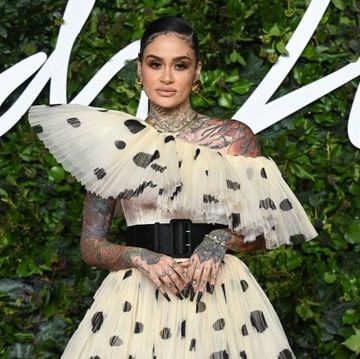If you’ve been on Twitter over the last few months (or years, TBH), you’ve probably seen the word Terf thrown around a fair bit - both in LGBTQ+ and straight/non-trans circles. So what is the meaning of terf?
Terf meaning
To put it not-so-simply, terf or TERF stands for 'trans-exclusionary radical feminist'. Otherwise known as someone who supposedly stands for women’s rights, while only considering people who were assigned female at birth to be women. This means they don't consider transgender women to be women.
Despite how much noise they make online, TERFs are a minority group who normally stick to online forums. But, last month they appeared at Manchester Pride. A group – of mainly lesbians - called ‘Get the L Out’ forcibly led the parade, carrying banners and handing out transphobic leaflets. Other stunts have included lying down in front of the march at London Pride in 2018 and protesting reforms to the Gender Recognition Act - legislation that would make the process of changing your gender on legal documents so much easier and less stressful for trans people.
Activist Viv Smythe is credited for first using the term in a series of blog posts from 2008, where she outlined her position as a trans ally. According to Smythe the term was meant to refer to a sub-section of radical feminists, rather than have the weaponised meaning it has today. Many exclusionists and other trans activists alike consider the word to be a slur and therefore they don't think it's productive in the discussion of trans identity.
Some of the people referred to as TERFs have instead tried to call themselves ‘gender critical’ feminists, as a way to make their beliefs seem more reasonable to the general public.
The people referred to as TERFs consider their beliefs to be a protest against the patriarchy. Under the guise of “protecting women” they spread the idea that trans women are a threat because they are men, attempting to gain access to women’s spaces such as bathrooms and trick lesbians into having sex with them. While transgender men are perceived as trying to escape the misogyny experienced by women, by becoming men.
This is, of course, bullshit. There is mountains of research by psychologists and academics to prove these ideas wrong, and these views have only fuelled the fire of violent transphobia that already exists in the UK.
So, to avoid all the confusion about slurs and names, let’s stop using the term TERFs and call them what they actually are – anti-trans activists. Giving them any association with feminism would be wrong, especially as many of their organisations are funded by anti-abortion and evangelical groups, and they rarely speak about anything other than denying trans people’s existence.
Dr Jane Hamlin, president of trans support group The Beaumont Society, says no one chooses to be trans. “It is the way we were born. It is perfectly natural – as natural as being left-handed. The only choice that trans people have is whether to remain hidden and suffer the inevitable torments alone or talk to others about it and risk rejection by friends and family, and ridicule and humiliation from others.
“Trans people themselves are often very vulnerable,” she adds, “And this is why those who refuse to recognise our right to exist are dangerous to us, because too many trans people see suicide as the only way to escape from the hateful and inaccurate things said about us.”
Events such as Manchester and London Prides welcome thousands of trans people and their allies every year, who march for acceptance and equality for everyone. Daz Skubich, former Trans Students Officer at the University of Manchester says, “If TERFs feel able to mobilise in these spaces, we are clearly not doing enough within the LGBTQ+ community to support and protect trans people, particularly transfeminine people and trans people of colour.”
Thankfully, this year at London Pride we were back on track. Groups such as ‘L with the T’ - lesbians with transgender people - and bisexual and queer male groups with similar names led the parade, showing their support for trans people in the LGBTQ+ community. Streams of other supporters followed behind and leaflets were circulated around Trafalgar Square with the slogan ‘trans people to the front’.
While Pride marches only happen a few times a year, organisations and charities such as Mermaids, Stonewall, the LGBT Foundation and the Beaumont Society offer help, advice and support every day to transgender people and their families across the UK.














